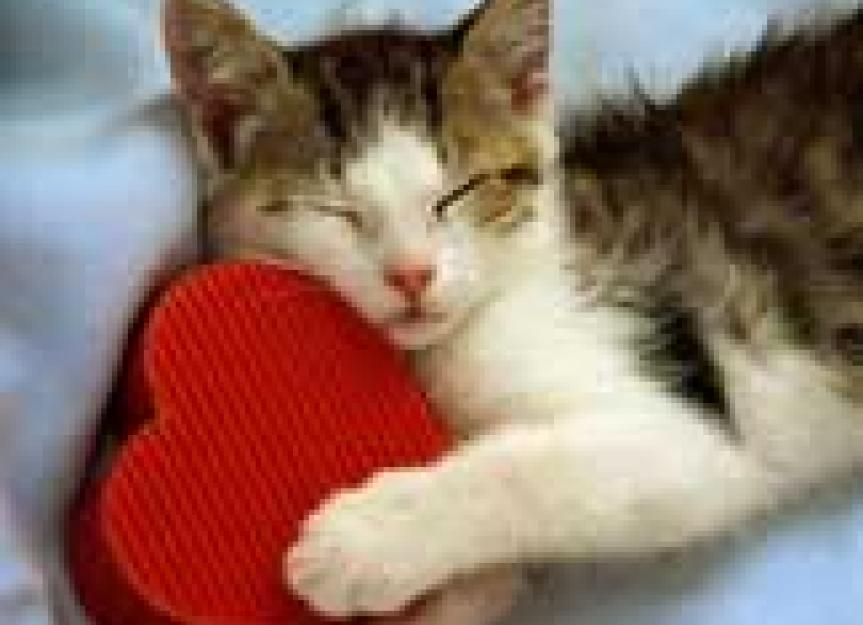Heart Disease in Cats
In honor of the fact that February is American Heart Month, I thought it would be a good idea to talk a little bit about heart disease in cats. So, here’s a little information you may not already know.
In cats, the most common heart disease seen is hypertrophic cardiomyopathy. Commonly called simply HCM,feline hypertrophic cardiomyopathyis a disease of the heart muscle. In affected cats, the heart muscle becomes thickened and eventually the heart is unable to pump blood efficiently and effectively.
Hypertrophic cardiomyopathy is seen in both purebred cats and mixed breeds. We do not understand all of the factors that cause HCM, but in some breeds, we do know that HCM has a genetic base. In some of these breeds, genetic tests are available to determine whether the cat has the mutation that causes hypertrophic cardiomyopathy. However, genetic tests are not available for all affected breeds at this point in time.
Symptoms of hypertrophic cardiomyopathy in cats are usually a result of heart failure; they include:
- difficulty breathing
- increased respiratory rate
- increased respiratory effort
- increased heart rate
- weakness
- lethargy
- lack of appetite
- fainting
- sudden death
In some cases, HCM can also cause a cat to develop blood clots. Most commonly, these blood clots become lodged at the end of the aorta, causing a condition known as aortic thromboembolism. This is sometimes also referred to as saddle thrombus. Cats suffering from aortic thromboembolism will suddenly become paralyzed in their hind legs, or will have a difficult time walking. The hind legs may become cold to the touch because of the lack of circulation and you may not be able to find a pulse in the hind legs. This condition is extremely painful for your cat, as well.
Hypertrophic cardiomyopathy is usually diagnosed through an echocardiogram, which is an ultrasonic examination of the heart.
Treatment of hypertrophic cardiomyopathy is aimed at controlling the symptoms of heart failure. There is currently no cure for the disease. Diuretics, such as furosemide, are commonly used to reduce the fluid accumulation in the lungs that occurs as the heart fails. Other medications that are used include ACE-inhibitors such as enalapril or benazepril, and Pimobendan, which is also known as Vetmedin.
There are other forms of heart disease that may also be seen in cats.Dilated cardiomyopathyis a heart disease that was once commonly seen. However, with the discovery that taurine deficiency was the main cause of dilated cardiomyopathy, most commercial cat foods increased the amount of taurine in their formulations and dilated cardiomyopathy is now seen much less frequently.
In contrast to the thickened heart muscle that causes the heart to be enlarged in hypertrophic cardiomyopathy, cats withdilatedcardiomyopathy have enlarged hearts because the chambers of their hearts are dilated, with more blood than normal in each chamber. This means the heart has to work much harder to pump the blood, resulting eventually in heart failure.
Symptoms seen with dilated cardiomyopathy are similar to those seen in cats with hypertrophic cardiomyopathy. This condition is primarily seen in cats that are eating an unbalanced diet.
Have you had a cat that suffered from heart disease? Share your experiences with us.

Dr. Lorie Huston
Image:Antonín Vodák/ viaShutterstock
Help us make PetMD better
Was this article helpful?
